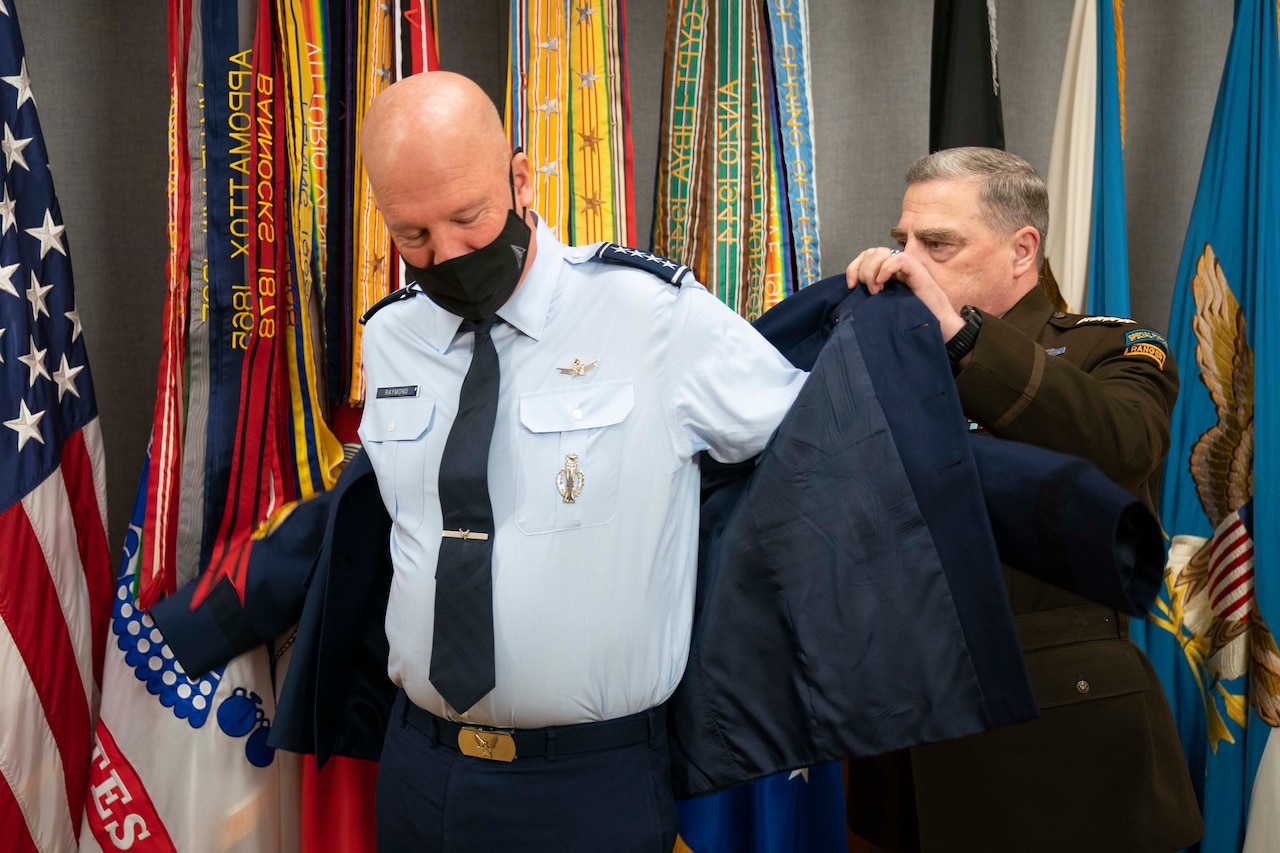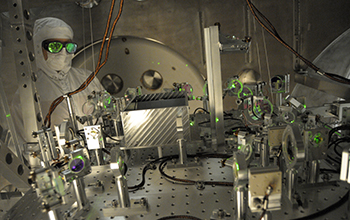
Chairman of the Joint Chiefs of Staff Army Gen. Mark Milley inducted Raymond, the chief of space operations, into the Joint Chiefs of Staff at a ceremony on Dec. 11. He becomes an official member of the body on the same day the Space Force celebrates its first anniversary as an official service branch.
The law stated that the chief of space operations would become a member of the Joint Chiefs a year after it was signed. “But under your leadership and under [the] leadership [of] the vice chairman, you said ‘We’re not going to wait!,’ and you’ve treated me like a member ever since [the law was signed],” Raymond said during the ceremony at the Pentagon. “I can’t thank you enough. I can’t thank my teammates enough. It’s a real privilege to sit at this table.”
The induction of Raymond points to the growing importance of space in American life. It also highlights the increased importance of the domain to the military. “We recognize it clearly as a warfighting domain. And we also know that we, the United States, we’ve got to maintain capabilities in that domain if we are going to continue to deter great power war,” Milley said during the ceremony. “This is an incredibly important organization for the United States military and for the United States as a country. And it’s really important what we’re doing today, which is [to] induct you as an official member into the Joint Chiefs of Staff.”
The United States Space Force is a separate service under the Department of the Air Force. It will grow to about 20,000 members with most coming from the Air Force, but with other services also providing personnel. The Air Force will provide all the services the new force needs, allowing the Guardians to concentrate on their missions.
“How fitting: The Chief of Space Operations is now officially a member of the Joint Chiefs of Staff, in keeping with the pivotal role of space in national defense,” said Air Force Secretary Barbara Barrett. “Incomparable Gen. Jay Raymond is building an agile, innovative and bold Space Force. With the other chiefs, Gen. Raymond will offer his best military advice to the president, National Security Council, Homeland Security Council and defense secretary as they implement the National Defense Strategy.”
Membership on the Joint Chiefs of Staff is set by law. The members are the chairman of the Joint Chiefs of Staff, the vice chairman, the Army chief of staff, the commandant of the Marine Corps, the chief of naval operations, the Air Force chief of staff, the chief of the National Guard Bureau and, now, the chief of space operations.
The body has grown and changed since it was formed out of the destruction of World War II. When formed, the Joint Chiefs were the chairman, the Army chief of staff, the chief of naval operations and the Air Force chief. The commandant of the Marine Corps was included when issues pertaining to the Marine Corps were discussed by the chiefs but he was not a member of the Joint Chiefs of Staff, said David Crist, Joint Staff historian.
Through the Berlin blockade, the Korean War, the Cuban Missile Crisis of October 1962, the Vietnam War and its aftermath, the body remained the same. The first personnel change came in 1978 when the Marine Corps commandant became a full-fledged member of the body.
In 1986, came the Goldwater-Nichols Act. It would be hard to understate the legislation’s effects on the Joint Chiefs of Staff. The legislation increased the visibility, responsibilities and reach of the chairman and added the office of the vice chairman of the Joint Chiefs of Staff. It changed the way the Joint Staff was manned and stressed the importance of joint duty for military officers and personnel.
The next change in the make-up of the body was the inclusion of the chief of the National Guard Bureau in 2012.
With the creation of the Space Force, comes the newest change.
Each chairman uses the body a bit differently, Crist said. The most recent three chairmen — Army Gen. Martin E. Dempsey, Marine Corps Gen. Joe Dunford and current chairman Army Gen. Mark A. Milley — convened the chiefs regularly for deliberations on many issues, Crist said.
This is not to say the Joint Chiefs is a consensus organization. The chairman decides what the best military advice is for the defense secretary, president and the rest of the National Security Council. Still, the chairman can — and does — pass along dissenting opinions from the other members of the Joint Chiefs when appropriate.
The Army, Marine Corps, Navy, Air Force and Space Force members of the joint chiefs are responsible for manning, training and equipping forces. But when they enter “the Tank” — the room in the Pentagon where they convene — they are expected to think and act for the good of the joint force. Their experience as a soldier, Marine, sailor or airman may color their perspective, but as members of the JCS, they are expected to embrace the larger military culture, Crist said.
“By establishing the U.S. Space Force and having the chief of space operations become a member of the Joint Chiefs of Staff, it demonstrates that our nation recognizes the critical role Space Force plays in national security,” Raymond said.
Source: US Space Force
This webpage is made available by SEO Press Release , press release distribution service by Topic News








